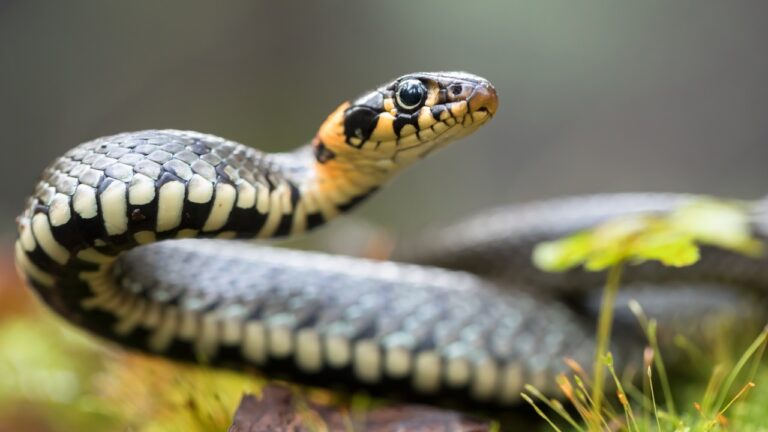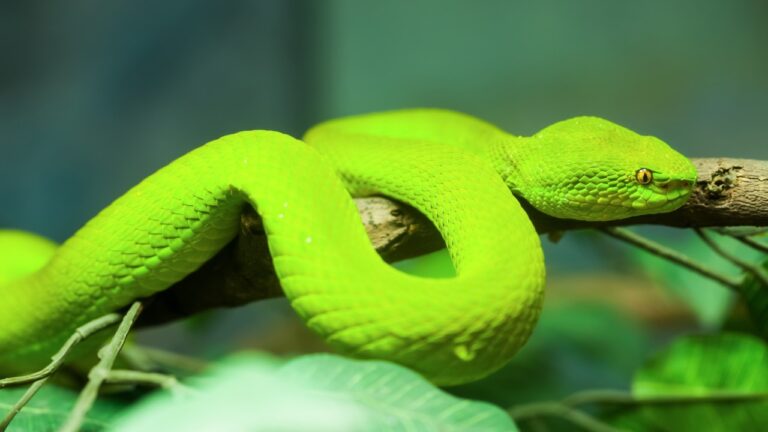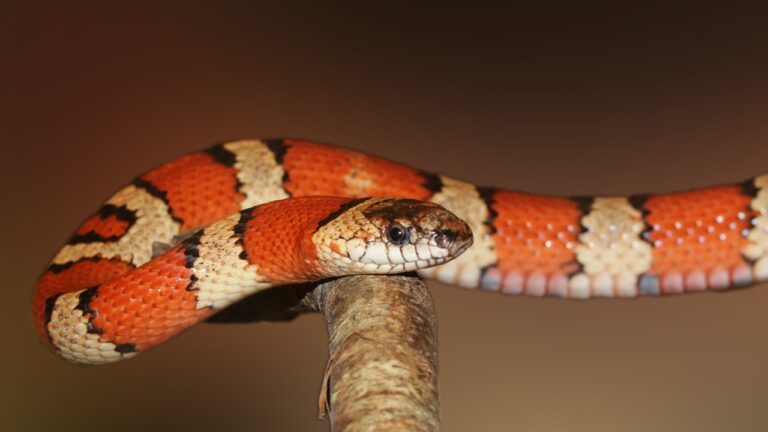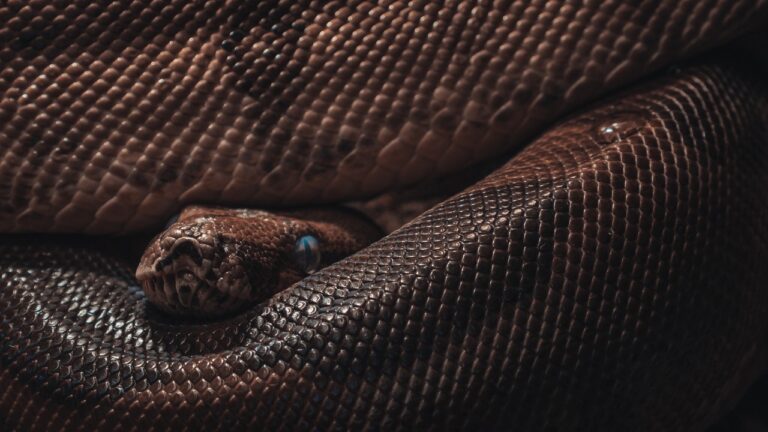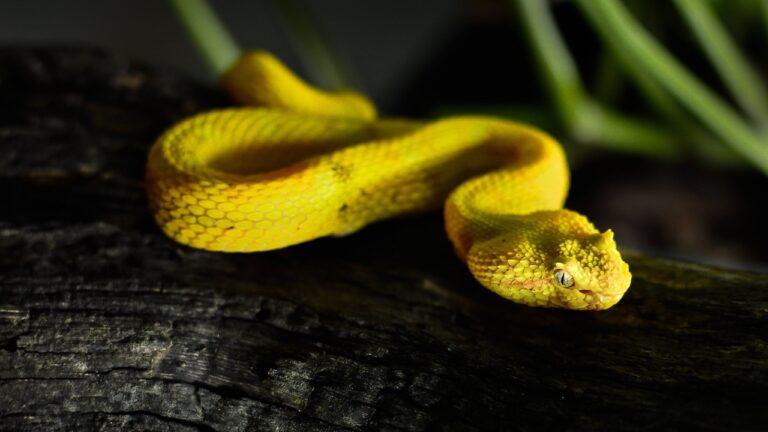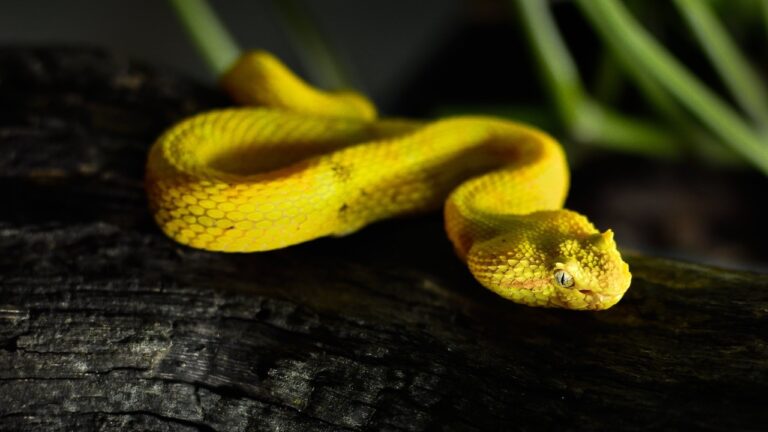Snake Feeding Tips: Optimal Schedules and Plans for Healthy Nutrition
Importance of proper snake feeding
When it comes to keeping a snake as a pet, ensuring proper nutrition is of utmost importance. A well-balanced diet plays a vital role in the overall health and well-being of these slithering companions. Just like any other living creature, snakes require adequate nourishment to thrive and stay healthy. Whether you are a seasoned snake owner or a novice enthusiast, understanding the significance of proper snake feeding is essential.
Proper snake feeding is crucial for a variety of reasons. First and foremost, it helps maintain the overall health of your scaly friend. A well-fed snake will have a healthy weight, vibrant skin, and a strong immune system. They will be more energetic and active, displaying their natural behaviors with enthusiasm. Additionally, providing the right nutrition will contribute to the longevity of your snake’s life, allowing you to enjoy their companionship for years to come.
By maintaining a balanced diet, you can also prevent the occurrence of various health issues that can arise from improper feeding. For example, overfeeding can lead to obesity, which can strain the snake’s organs and potentially shorten its lifespan. On the other hand, underfeeding can result in malnutrition and weakness. By understanding the nutritional needs of your snake and following a proper feeding routine, you can minimize the risk of these problems.
Proper snake feeding also promotes natural behaviors and instincts. Snakes are predators by nature, and their feeding habits are an essential part of their survival instincts. A well-fed snake will display its natural hunting and feeding behaviors, which can be fascinating to observe. It allows them to exercise their natural instincts and provides mental stimulation, contributing to their overall well-being.
In this comprehensive guide, we will delve into the world of snake nutrition and provide you with valuable insights into optimal feeding practices. We will explore the natural diet of snakes, discuss different feeding habits based on snake species, and provide practical tips for scheduling feedings, choosing the right prey, and feeding techniques. We will also address common snake feeding mistakes to avoid and offer special considerations for different snake species. So, let’s embark on this journey of unraveling the secrets to proper snake feeding and ensure the well-being of our slithering companions.
*[snake feeding habits]: https://serpentsuppers.com/snake-feeding-habits
*[adequate]: #
*[unraveling]: #
Understanding Snake Nutrition
When it comes to keeping a snake as a pet, one of the most important aspects to consider is their nutrition. Proper nutrition plays a crucial role in maintaining the overall health and well-being of these remarkable creatures. In this section, we will delve into the fascinating world of snake nutrition, exploring their natural diet and the various feeding habits exhibited by different types of snakes.
Natural Diet of Snakes
To truly understand snake nutrition, it is essential to examine their natural diet in the wild. Snakes are carnivorous creatures, meaning they primarily feed on other animals. However, the specific prey items they consume can vary depending on the species.
Some snakes are known to have a preference for rodents, such as mice and rats. These small mammals provide a nutrient-rich meal for snakes, supplying them with the necessary proteins, fats, and minerals they need to thrive. Other snakes may have a taste for birds, amphibians, or even other reptiles.
Different Types of Snakes and Their Feeding Habits
Snakes come in a remarkable array of shapes, sizes, and habitats, and their feeding habits can vary greatly as a result. For instance, arboreal snakes, which are adapted to life in trees, often rely on a diet consisting of birds and their eggs. Their ability to climb and maneuver in the treetops allows them to successfully capture and consume their feathered prey.
On the other hand, burrowing snakes, such as the sand boa, have a diet that primarily consists of small mammals, like rodents. These snakes spend much of their time underground, patiently waiting for their unsuspecting prey to pass by their hidden burrows.
Aquatic snakes, as the name suggests, are found in water environments and have adapted to a life in and around aquatic habitats. These snakes typically feed on fish, amphibians, and other water-dwelling creatures. Their streamlined bodies and specialized hunting techniques enable them to navigate through water with ease, capturing their prey efficiently.
Understanding the natural diet and feeding habits of different snake species is crucial for providing them with a proper and balanced diet in captivity. By replicating their natural feeding behaviors, we can ensure that our snake companions receive the nutrition they require to lead a healthy and fulfilling life.
Now that we have gained insight into snake nutrition and their natural diet, let’s move on to the practical aspects of snake feeding. In the following section, we will explore the optimal schedules and plans for feeding snakes, ensuring they receive the nourishment they need. Stay tuned!
Internal Links:
Snake Feeding Tips
Feeding your snake properly is crucial for its overall health and well-being. By understanding the optimal schedules and plans for healthy nutrition, you can ensure that your snake receives the nutrients it needs to thrive. In this section, we will explore some essential snake feeding tips that will guide you in providing the best care for your scaly companion.
Scheduling Feedings
Establishing a consistent feeding schedule is vital for maintaining a healthy snake. Snakes are ectothermic creatures, meaning their body temperature is regulated by external sources. As a result, their metabolism and digestion are influenced by the environment. To accommodate this, it is recommended to feed your snake based on its species and size.
For most snakes, a general rule of thumb is to feed them once every 5 to 10 days. However, it’s important to note that different snake species may have specific feeding requirements. Some snakes, such as pythons and boas, prefer larger meals but less frequently, while others, like garter snakes, may require smaller meals more often. To determine the optimal feeding frequency for your snake, refer to a reputable snake feeding guide or consult a veterinarian.
Choosing the Right Prey
When it comes to snake nutrition, choosing the right prey is crucial. Snakes are carnivorous and have varying dietary preferences based on their species. Their natural diets typically consist of rodents, birds, amphibians, or even other reptiles. It is essential to replicate their natural diet as closely as possible in captivity.
In captivity, most snake owners opt for pre-killed or frozen-thawed prey, as they are safer and more convenient than live prey. Feeding your snake live prey can lead to injuries for both the snake and the prey, as well as potential stress for your pet. Always ensure that the prey you provide is appropriate for your snake’s size and species. Refer to a snake feeding chart or consult a reptile expert to determine the ideal prey size for your snake.
Preparing the Prey
Before feeding your snake, it is crucial to prepare the prey properly. If you are using frozen-thawed prey, make sure to thaw it thoroughly before offering it to your snake. This can be done by placing the prey item in a sealed plastic bag and submerging it in warm water until fully thawed. Avoid using a microwave or boiling water, as this can cause uneven heating and potentially harm your snake during digestion.
Once the prey is thawed, use tongs or forceps to present it to your snake. This mimics the natural hunting behavior of snakes and helps to stimulate their feeding response. Remember to always be cautious and avoid hand-feeding to prevent accidental bites.
Feeding Techniques
When it comes to feeding your snake, there are different techniques you can use. The most common method is placing the prey item directly in the snake’s enclosure. This allows the snake to locate and consume the prey at its own pace. Some snake owners prefer to use feeding tongs to simulate prey movement and encourage a more natural feeding response.
It’s important to monitor your snake during feeding to ensure it consumes the prey properly. If the snake doesn’t eat the prey immediately, remove it from the enclosure to prevent spoilage and potential health issues. For more detailed information on snake feeding techniques, refer to a reliable snake feeding guide.
Monitoring and Adjusting
Regular monitoring of your snake’s feeding behavior and body condition is crucial to ensure it is receiving proper nutrition. Keep an eye on its weight, as sudden weight loss or gain can indicate potential health issues. If you notice any changes in your snake’s feeding habits or overall condition, it may be necessary to adjust its feeding schedule or seek veterinary advice.
Remember that every snake is unique, and what works for one may not work for another. To maintain a healthy feeding routine for your snake, it’s important to be attentive to its individual needs and adjust accordingly. By observing its behavior and staying informed about snake feeding habits, you can ensure that your scaly friend receives the optimal nutrition it requires to thrive.
In the next section, we will explore some common snake feeding mistakes to avoid, so be sure to read on to enhance your knowledge on proper snake nutrition.
Common Snake Feeding Mistakes to Avoid
When it comes to feeding your snake, it’s important to be aware of the common mistakes that snake owners often make. By avoiding these pitfalls, you can ensure that your snake stays healthy and happy. Let’s take a closer look at the three most common snake feeding mistakes and how to avoid them.
Overfeeding
One of the most prevalent mistakes snake owners make is overfeeding their slithery companions. Snakes have a slower metabolism compared to other animals, which means they don’t need to eat as frequently. Overfeeding can lead to obesity and a range of health issues for your snake, including digestive problems and decreased lifespan.
To avoid overfeeding, it’s crucial to establish a proper feeding schedule based on your snake’s species and age. This will help you determine the appropriate feeding frequency and portion size. Remember, it’s better to slightly underfeed your snake than to overfeed it. If you’re unsure about the ideal feeding schedule for your snake, consult a veterinarian or refer to reputable sources such as a snake feeding chart or a comprehensive snake feeding guide.
Feeding Inappropriate Prey
Another common mistake is feeding your snake inappropriate prey. Different snake species have different feeding habits, and it’s essential to understand what types of prey are suitable for your particular snake. Feeding your snake prey that is too large can lead to regurgitation or even internal injuries, while prey that is too small may not provide the necessary nutrients.
Research your snake’s natural diet and choose prey that closely resembles what it would consume in the wild. For example, if you have a corn snake, it typically feeds on small rodents such as mice or rats. Avoid feeding your snake wild-caught prey, as they can carry parasites or diseases that could harm your pet. It’s always best to purchase frozen prey from a reputable supplier, as these are specially bred and prepared to meet the nutritional needs of captive snakes.
Inconsistent Feeding Schedule
Maintaining a consistent feeding schedule is crucial for the overall well-being of your snake. Snakes are creatures of habit, and an inconsistent feeding routine can cause stress and disrupt their feeding behavior. When snakes are fed irregularly, they may become agitated, refuse to eat, or exhibit abnormal feeding behaviors.
To avoid this mistake, establish a regular feeding schedule that aligns with your snake’s natural feeding habits. Depending on the species, snakes may require feeding once every few days, once a week, or even less frequently. Consistency is key, so try to feed your snake at the same time and on the same days each week. This will help your snake develop a routine and feel more secure during feeding time.
By paying attention to these common snake feeding mistakes and taking steps to avoid them, you can ensure that your snake receives the proper nutrition it needs for a healthy and fulfilling life. Remember, a well-fed snake is a happy snake!
*If you want to learn more about snake feeding habits or need guidance on creating an optimal feeding plan, check out our comprehensive guide on snake feeding habits or our helpful snake feeding plans.
Special Considerations for Different Snake Species
When it comes to snake feeding, it’s important to understand that different snake species have unique dietary needs and feeding habits. Taking these special considerations into account will ensure that your scaly friend receives the optimal nutrition it requires for a healthy and thriving life. In this section, we will explore the special considerations for three specific snake species: arboreal snakes, burrowing snakes, and aquatic snakes.
Arboreal Snakes
Arboreal snakes are known for their ability to climb and live in trees. These agile creatures have adapted to a diet that primarily consists of small birds, eggs, and tree-dwelling mammals. When feeding arboreal snakes, it is crucial to simulate their natural hunting environment. You can achieve this by providing elevated platforms or branches where they can securely wrap around their prey. Additionally, offering a variety of prey options, such as small birds or mice, can help replicate the diversity of their natural diet.
Burrowing Snakes
Burrowing snakes are predominantly found underground, where they hunt for their food. These snakes have a diet that primarily consists of small rodents, lizards, and insects. When feeding burrowing snakes, it is essential to consider their feeding behavior. These snakes often rely on ambush tactics, patiently waiting for their prey to pass by. To mimic this natural behavior, you can place the prey near their burrow entrance and allow the snake to strike when it feels comfortable. This ensures that the snake can eat in a stress-free environment, replicating its natural feeding habits.
Aquatic Snakes
Aquatic snakes, as the name suggests, spend a significant portion of their lives in water. Their diet mainly consists of fish, amphibians, and aquatic invertebrates. When feeding aquatic snakes, it is crucial to provide them with a suitable environment to capture and consume their prey. You can achieve this by setting up a shallow water area with live fish or other aquatic organisms. This not only stimulates their natural hunting instincts but also provides the necessary hydration for these water-dwelling reptiles.
Understanding the specific feeding requirements of different snake species is vital for their overall health and well-being. By taking into consideration the unique needs of arboreal snakes, burrowing snakes, and aquatic snakes, you can ensure that your scaly companion receives a diet that closely resembles what they would consume in the wild.
For more information on snake feeding, you can refer to our comprehensive snake feeding guide. It provides in-depth insights into snake feeding habits, schedules, and common mistakes to avoid. Stay tuned for the next section where we address frequently asked questions regarding snake feeding.
Frequently Asked Questions
How often should I feed my snake?
Determining the proper feeding schedule for your snake is crucial to maintaining its health and well-being. The frequency of feedings depends on the species, age, and size of your snake. As a general rule of thumb, most snakes should be fed once every 1-2 weeks. However, it’s important to do thorough research on the specific requirements of your snake’s species, as some may have different feeding needs.
To ensure you are providing the right amount of food, it is recommended to consult a reliable source, such as a snake feeding chart or guide. These resources offer valuable information on the ideal feeding frequency for different snake species. By following these guidelines, you can ensure that your snake receives the necessary nutrients without overfeeding or underfeeding.
Can I feed my snake live prey?
Feeding live prey to snakes is a topic of debate among reptile enthusiasts. While some argue that it simulates the natural hunting behavior of snakes, others caution against the risks associated with live prey. Feeding live prey to snakes can be dangerous for both the snake and the prey animal.
Live prey can potentially injure or even kill the snake during the feeding process. Rodents, for example, have sharp teeth and claws that can cause harm. Additionally, live prey may carry parasites or diseases that can be transmitted to the snake.
To minimize these risks, it is generally recommended to feed your snake pre-killed prey. This not only ensures the safety of your snake but also eliminates the stress and potential harm caused by live prey. Pre-killed prey can be purchased from reputable sources or prepared at home following proper hygiene practices.
What should I do if my snake refuses to eat?
It’s not uncommon for snakes to refuse food from time to time. There can be various reasons behind this behavior, including stress, illness, or environmental factors. If your snake refuses to eat, it’s important not to panic or force-feed it. Instead, consider the following steps:
-
Check the temperature and humidity: Ensure that the enclosure is providing the appropriate conditions for your snake’s species. Incorrect temperature or humidity levels can affect their appetite.
-
Offer a different prey item: Sometimes, snakes can be picky eaters and may prefer certain types of prey over others. Experiment with different prey items to see if your snake shows more interest.
-
Try scenting the prey: If your snake is not enticed by the prey item, you can try scenting it with the smell of their preferred food. This can be done by rubbing the prey against a mouse or rat, for example.
-
Monitor for signs of illness: If your snake continues to refuse food for an extended period or shows other concerning symptoms, it may be wise to consult a veterinarian experienced in reptile care. They can help diagnose any potential health issues and provide appropriate treatment.
Remember, snakes have unique feeding behaviors, and occasional refusal to eat is not necessarily a cause for alarm. By closely monitoring your snake’s feeding behavior and making appropriate adjustments, you can ensure their nutritional needs are met.
Conclusion
In conclusion, proper snake feeding is crucial for maintaining the health and well-being of these fascinating creatures. By understanding the natural diet and feeding habits of snakes, as well as implementing effective feeding tips and avoiding common mistakes, snake owners can ensure that their pets receive the nutrition they need.
Scheduling feedings is an important aspect of snake care. By following a regular feeding routine, owners can provide their snakes with a sense of security and stability, which can promote healthy eating habits. It is also essential to choose the right prey for your snake, taking into consideration its size and species. Feeding inappropriate prey can lead to nutritional imbalances and potential health issues.
Preparing the prey properly is another crucial step in snake feeding. Whether you are feeding live or frozen prey, ensuring that it is of high quality and free from any harmful contaminants is essential. Additionally, using appropriate feeding techniques, such as using tongs or feeding in a separate enclosure, can minimize the risk of injury to both the snake and the owner.
Monitoring and adjusting the snake’s feeding schedule and prey size is necessary to ensure that it is receiving the correct amount of food. Overfeeding can lead to obesity and other health problems, while underfeeding can result in malnutrition. By observing your snake’s body condition and behavior, you can make informed decisions about its feeding regime.
It is important to note that different snake species may have specific feeding requirements. Arboreal snakes, for example, may prefer to eat prey items that are suspended or elevated, mimicking their natural feeding behavior. Burrowing snakes, on the other hand, may require prey items to be hidden or buried to stimulate their hunting instincts. Aquatic snakes might need to be fed in water to facilitate their feeding process.
Finally, some frequently asked questions about snake feeding have been addressed, such as how often to feed a snake, whether live prey is suitable, and what to do if a snake refuses to eat. These questions provide valuable insights into the intricacies of snake feeding and offer practical solutions for common challenges.
In summary, snake feeding is a complex and vital aspect of caring for these captivating reptiles. By following the guidelines outlined in this article and seeking additional resources like our snake feeding guide, snake owners can ensure that their pets receive the nutrition they need for a long and healthy life. Remember, understanding snake feeding habits and avoiding common snake feeding mistakes are key to providing optimal nutrition and promoting overall well-being for these remarkable creatures.


